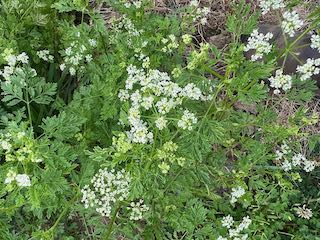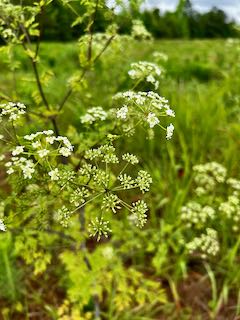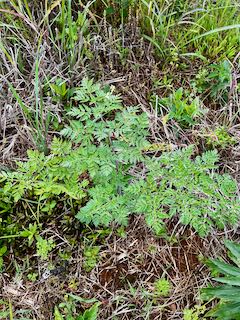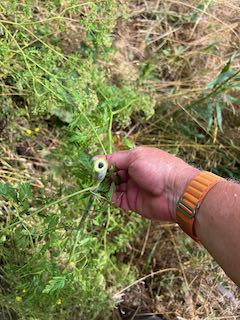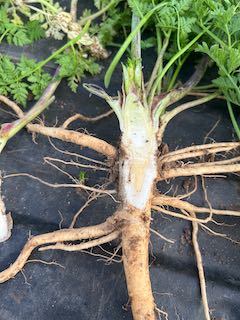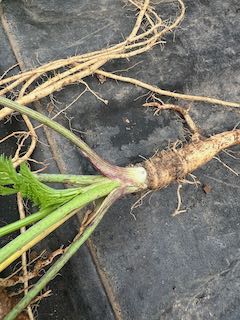Poison Hemlock Found in Orange County NC
go.ncsu.edu/readext?949735
en Español / em Português
El inglés es el idioma de control de esta página. En la medida en que haya algún conflicto entre la traducción al inglés y la traducción, el inglés prevalece.
Al hacer clic en el enlace de traducción se activa un servicio de traducción gratuito para convertir la página al español. Al igual que con cualquier traducción por Internet, la conversión no es sensible al contexto y puede que no traduzca el texto en su significado original. NC State Extension no garantiza la exactitud del texto traducido. Por favor, tenga en cuenta que algunas aplicaciones y/o servicios pueden no funcionar como se espera cuando se traducen.
Português
Inglês é o idioma de controle desta página. Na medida que haja algum conflito entre o texto original em Inglês e a tradução, o Inglês prevalece.
Ao clicar no link de tradução, um serviço gratuito de tradução será ativado para converter a página para o Português. Como em qualquer tradução pela internet, a conversão não é sensivel ao contexto e pode não ocorrer a tradução para o significado orginal. O serviço de Extensão da Carolina do Norte (NC State Extension) não garante a exatidão do texto traduzido. Por favor, observe que algumas funções ou serviços podem não funcionar como esperado após a tradução.
English
English is the controlling language of this page. To the extent there is any conflict between the English text and the translation, English controls.
Clicking on the translation link activates a free translation service to convert the page to Spanish. As with any Internet translation, the conversion is not context-sensitive and may not translate the text to its original meaning. NC State Extension does not guarantee the accuracy of the translated text. Please note that some applications and/or services may not function as expected when translated.
Collapse ▲Two types of Poison Hemlock were found in Orange County NC.
Both Circuta maculata and Conium maculatum were positively identified. Circuta maculata is actually native to Orange County where Conium maculatum was discovered here around 1957. A resurgence of this dangerous plant can be found in multiple areas of the county.
Linked locations where these plants were identified in Orange County. (Thanks Izzie)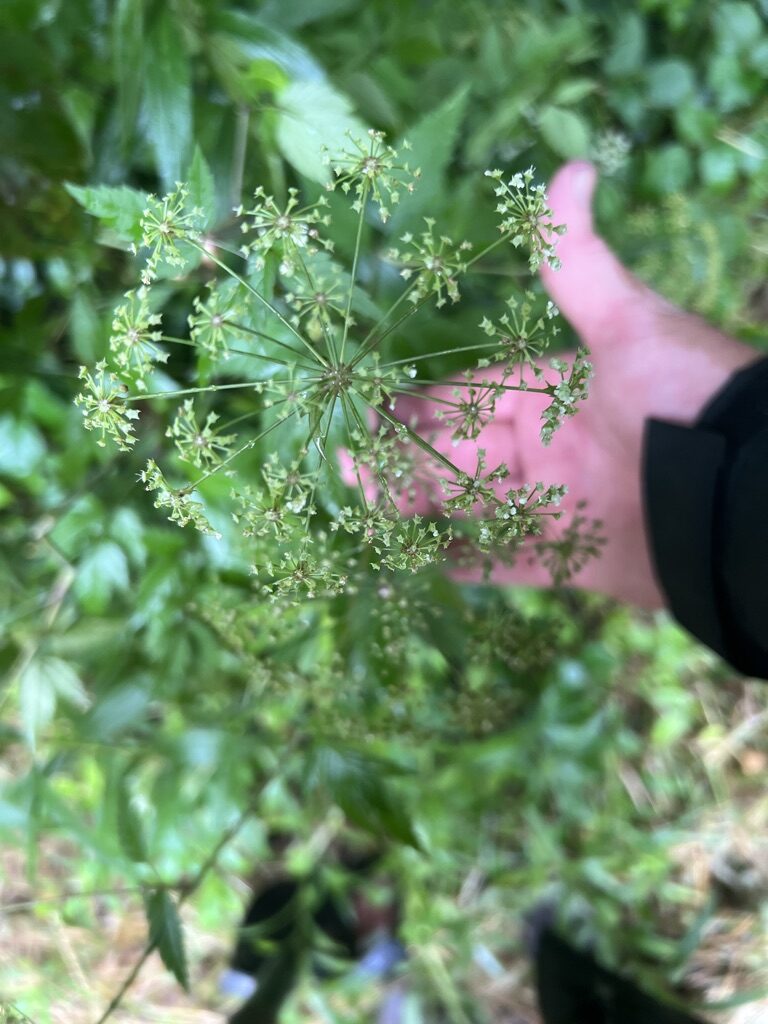
Cicuta maculata has multiple common names such as Cowbane, Poison Hemlock, Poison Parsnip, Spotted Cowbane, Spotted Hemlock, Spotted Water Hemlock, Water Hemlock. It is different from Conium maculatum.
Poison Hemlock (Cicuta maculata) is HIGHLY TOXIC, and MAY BE FATAL IF EATEN! It is a group 1 toxin and the plant is the most poisonous one in North Carolina. All parts of the plant are poisonous. Ingestion can be fatal and cattle are most likely poisoned but it is known that horses, sheep and swine have been poisoned. This plant is said to be the plant that caused the death of the ancient Greek philosopher Socrates.
Conium maculatum has multiple common names such as California Fern, Deadly Hemlock, Nebraska Fern, Poison Fool’s Parsley, Poison Hemlock, Poison Parsley, Spotted Hemlock, Winter Fern.
Poison Hemlock (Conium maculatum) is HIGHLY TOXIC, and MAY BE FATAL IF EATEN! It is a group 2 toxin which is dangerous but rarely eaten because it is not palatable and it has a bad odor. All parts of the plant are poisonous, with the mature plant and seeds/fruit being more toxic than the other parts.
There are look alike plants such as Queen Anne’s Lace and Elderberry.
The difference to both the toxic plans are the stems are hollow, smooth, and have purplish spots. The Poison Hemlock is a bi-annual, meaning it grows a rosette the first year and the spike or flower’s the second year.
If you see it in Orange County NC, please take photos and text them to Mart Bumgarner, the crops and horticulture agent. He is mapping the location of these plants within the county.
The poison plants are easy to control with either a broad-sprectrum herbicide like Glyphosate, or a selective herbicide like 2,4-D and dicamba.
Circuta maculata information paper





